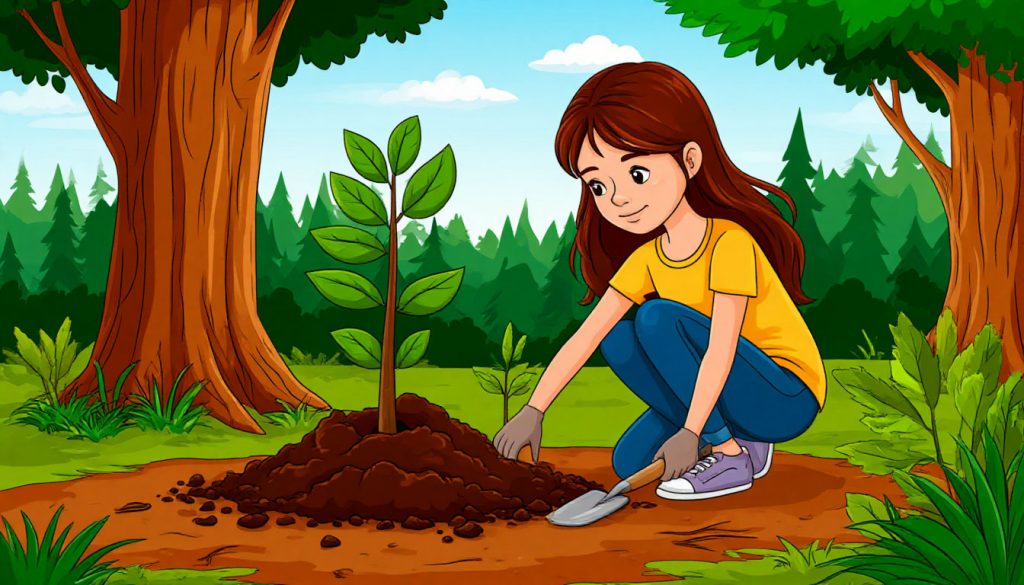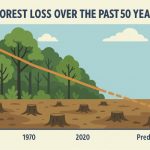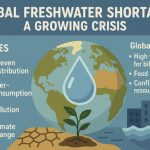Forests are vanishing at an alarming rate, with millions of hectares lost each year. But this trend is not inevitable. While systemic change is essential, individual and community-level actions can make a real impact. Protecting forests is not only about preserving trees — it’s about safeguarding biodiversity, stabilizing the climate, and securing clean water and air for future generations.
Why Forests Matter
Before addressing solutions, it’s important to understand what forests provide:
- Climate regulation: Forests absorb CO₂, acting as major carbon sinks.
- Biodiversity: More than 80% of terrestrial animals and plants live in forests.
- Water cycles: Trees influence rainfall patterns and prevent erosion.
- Livelihoods: Forests support 1.6 billion people worldwide, especially Indigenous communities.
- Health and air quality: Trees filter pollutants and release oxygen.
What Can We Do Right Now?
1. Consume Responsibly
- Avoid products that drive deforestation like palm oil, soy (in processed foods and animal feed), and unsustainable beef.
- Look for eco-labels such as FSC (Forest Stewardship Council) or Rainforest Alliance.
- Eat less meat, especially industrially produced beef, which is a leading cause of forest clearance in the Amazon.
- Choose recycled or bamboo-based paper and packaging.
2. Support Reforestation and Forest Protection
- Donate to or volunteer with reforestation organizations that plant native trees in degraded areas.
- Support groups protecting Indigenous land rights, which are closely linked to lower deforestation rates.
- Participate in community tree-planting events and urban greening programs.
3. Use Your Voice and Vote
- Vote for policies and leaders that support forest protection and sustainable land use.
- Sign petitions, write to representatives, and advocate for forest-friendly climate action.
- Share educational content about deforestation on social media to raise awareness.
4. Reduce Waste and Carbon Footprint
- Less waste = less land needed for raw materials.
- Conserve energy, use public transport, and reduce single-use items to lower your environmental impact.
- Offset your footprint by supporting verified carbon offset programs that protect existing forests.
5. Plant and Protect Trees Locally
- Even planting trees in your yard, school, or neighborhood helps increase canopy cover and wildlife habitat.
- Avoid harmful invasive species; choose native plants that support local ecosystems.
- Care for existing trees—old trees store more carbon and provide richer habitat than newly planted ones.
How Businesses and Governments Must Act
While individual action matters, large-scale change requires:
- Enforcing zero-deforestation laws in agriculture and logging.
- Ending subsidies for activities that drive forest destruction.
- Investing in forest restoration and agroforestry.
- Strengthening land rights for Indigenous peoples and forest-dependent communities.
Public demand fuels political action. Together, local efforts and global policy can stop forest loss.
Remember that only the unification of all mankind on a universal basis can put an end to all the problems that we have now.
Glossary
- Deforestation — The large-scale clearing or thinning of forests for other land use.
- Carbon sink — A natural system that absorbs more carbon than it releases.
- Agroforestry — Integrating trees into farmland to increase sustainability and biodiversity.
- FSC-certified — Products sourced from forests managed responsibly according to environmental and social standards.
- Native species — Plants or animals naturally occurring in a region, supporting local ecosystems.


